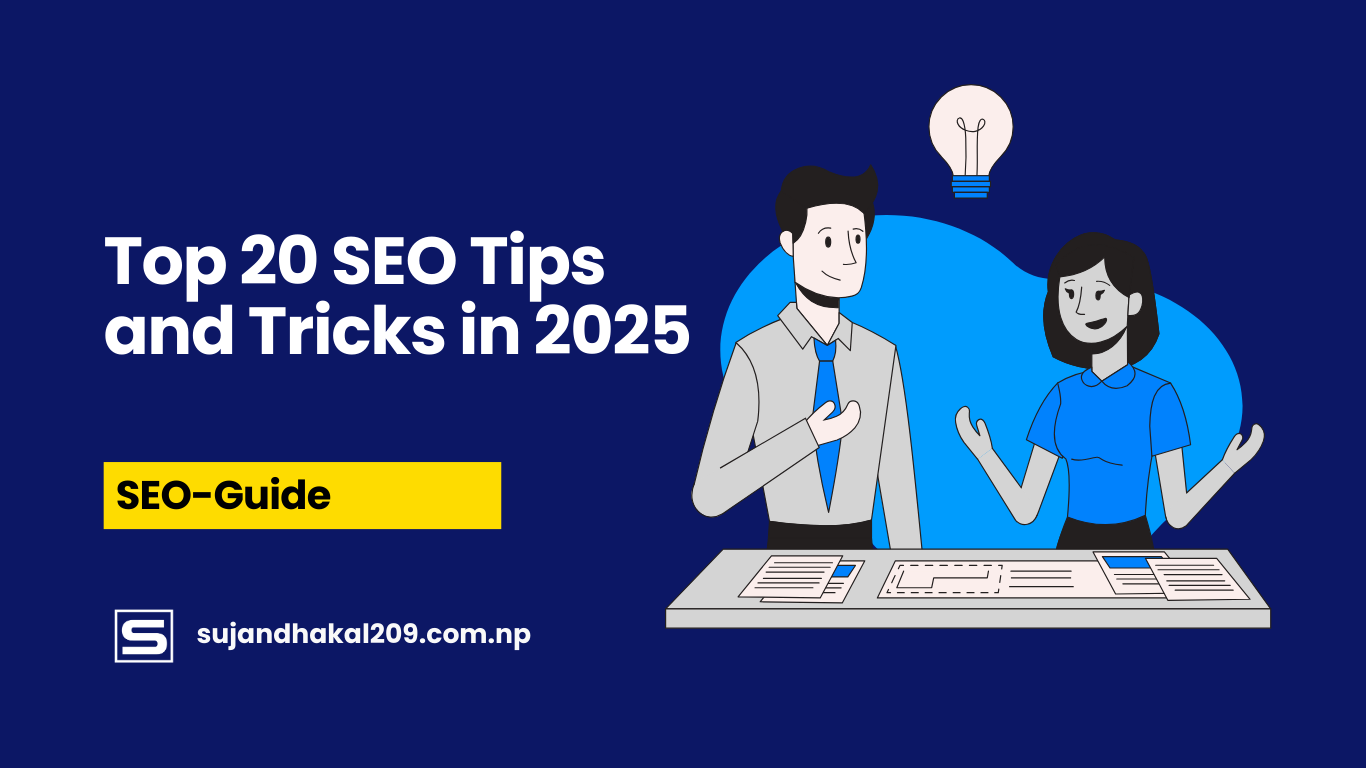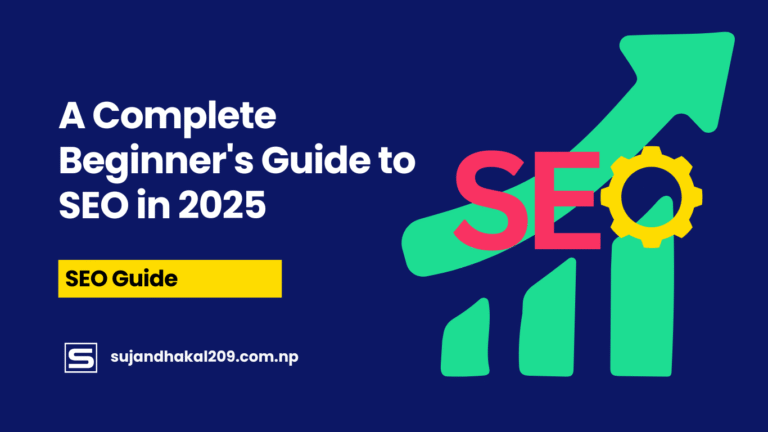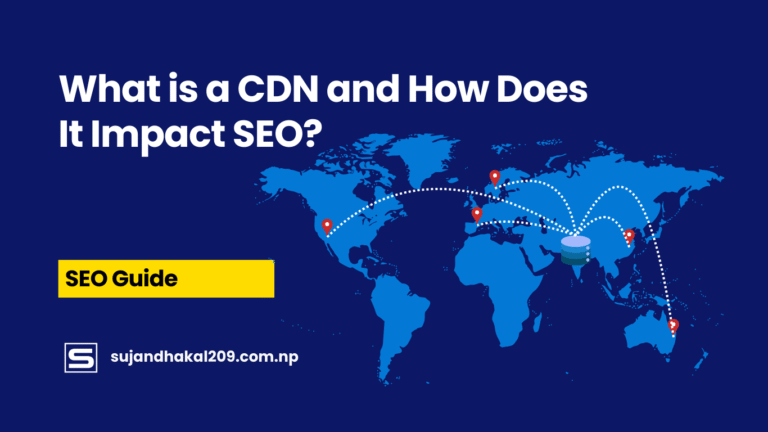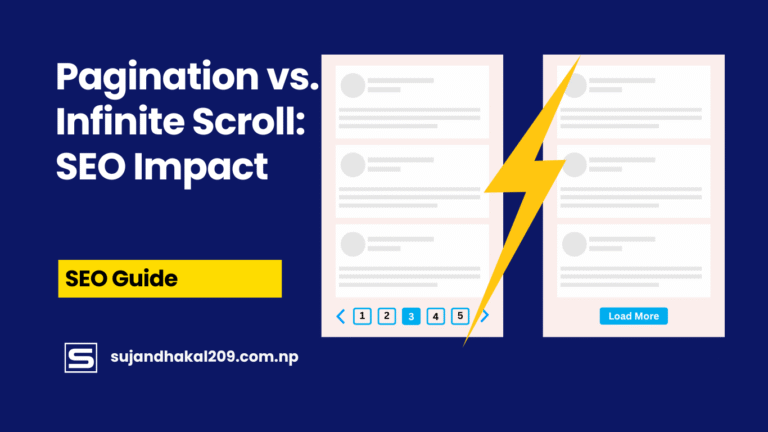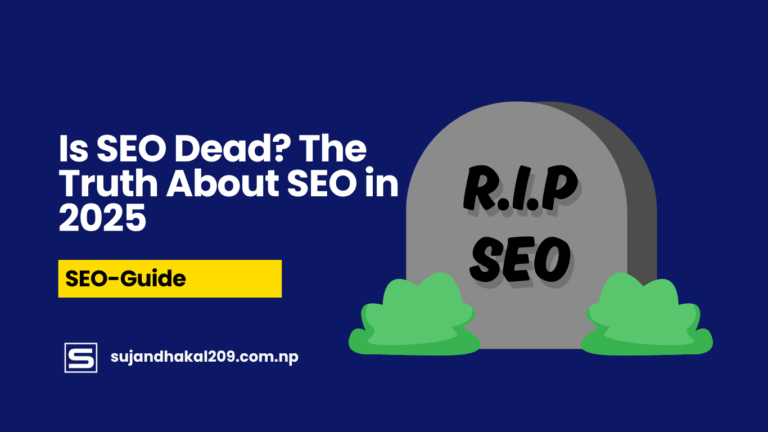SEO is constantly evolving, and if you want to stay ahead in 2025, you need to be updated with the latest trends, strategies, and algorithm changes. In this post, we’ll share 20 SEO tips and tricks that actually work to help you dominate search rankings and boost organic traffic.
Let’s dive in!
1. Prioritize User Experience (UX) for SEO
Google’s algorithm in 2025 focuses heavily on user experience (UX). Factors like page speed, mobile-friendliness, and site navigation impact rankings.
- Use Google’s Core Web Vitals to measure performance.
- Optimize your website for faster loading speeds.
- Improve site structure for easy navigation.
- Reduce bounce rate by enhancing content engagement.
A great UX keeps visitors on your site longer, sending positive signals to Google.
2. Optimize for Google’s Helpful Content Update
Google’s Helpful Content Update prioritizes websites with valuable, user-focused content over keyword-stuffed or AI-generated content.
- Write for humans first, not search engines.
- Cover topics in-depth, answering search intent.
- Avoid clickbait or misleading content.
- Keep content fresh and regularly updated.
Providing genuine value is key to ranking higher in 2025.
3. Master E-E-A-T: Experience, Expertise, Authority, Trust
Google’s E-E-A-T (Experience, Expertise, Authority, and Trust) plays a huge role in rankings, especially in YMYL (Your Money, Your Life) niches.
- Establish author credibility (add author bios, credentials).
- Get high-quality backlinks from authoritative sites.
- Maintain accuracy and transparency in your content.
- Gain positive reviews and mentions across the web.
Trustworthiness is critical for SEO success in 2025.
4. Optimize for Zero-Click Searches and Featured Snippets
Zero-click searches (where users get answers without clicking) are increasing. To capture this traffic:
- Answer questions directly in your content.
- Use structured data to help Google understand your page.
- Optimize for Google’s Featured Snippets (bullet points, tables, FAQs).
- Write concise, well-formatted paragraphs that match search queries.
This boosts visibility even if users don’t visit your site.
5. Mobile-First Indexing: Optimize for Mobile Users
Google prioritizes the mobile version of websites for indexing. Ensure your site is:
- Fully responsive (works perfectly on all devices).
- Has fast-loading mobile pages.
- Uses easy-to-read fonts and button sizes.
- Eliminates intrusive pop-ups affecting UX.
A mobile-optimized site is non-negotiable for ranking in 2025.
6. Focus on High-Quality, Long-Form Content
In 2025, long-form content is still one of the most effective ways to rank higher on search engines.
- Write in-depth articles (1,500–3,000 words) covering topics thoroughly.
- Structure content with H2, H3, and H4 headings for better readability.
- Use bullet points, tables, and images to break up text.
- Ensure your content answers user intent completely.
The more comprehensive and valuable your content, the higher Google will rank it.
7. Improve Internal Linking Strategy
Internal linking helps Google understand site structure and passes link equity between pages.
- Link relevant pages to keep users engaged.
- Use descriptive anchor text (not generic “click here”).
- Maintain a logical linking hierarchy for smooth navigation.
- Ensure no orphan pages (pages with no internal links pointing to them).
A strong internal linking strategy boosts rankings and user experience.
8. Leverage AI and Machine Learning for SEO
AI-driven SEO tools are transforming the way we optimize websites. Use:
- ChatGPT, Jasper AI for content brainstorming.
- SurferSEO, Clearscope for content optimization.
- Google Bard, Bing AI to analyze trends and keyword insights.
- AI-powered chatbots for better user engagement.
AI tools help streamline SEO while keeping content authentic and valuable.
9. Optimize for Voice Search
With the rise of voice assistants like Alexa and Google Assistant, optimizing for voice search is essential.
- Use natural language and conversational tone in content.
- Optimize for long-tail, question-based keywords (“How to optimize for SEO?”).
- Provide direct, concise answers for voice queries.
- Use structured data to help search engines understand content context.
Voice search is shaping how users find information online.
10. Build a Strong Backlink Profile
Backlinks remain a key ranking factor in 2025, but quality matters more than quantity.
- Get authoritative backlinks from high-DA websites.
- Avoid spammy, low-quality backlinks that harm SEO.
- Leverage guest posting and digital PR for link building.
- Use broken link building to gain new backlinks.
A strong, natural backlink profile signals credibility to Google.
11. Optimize for Local SEO
If you run a local business, Local SEO is crucial in 2025.
- Claim and optimize your Google My Business (GMB) listing.
- Get positive reviews on Google and other platforms.
- Use local keywords (e.g., “best coffee shop in New York”).
- Ensure your NAP (Name, Address, Phone Number) is consistent across directories.
- Create location-specific content to attract local searches.
Local SEO helps businesses dominate local search results and drive foot traffic.
12. Implement Schema Markup for Rich Results
Schema markup helps search engines better understand your content and display rich snippets in search results.
- Use FAQ schema to appear in “People Also Ask” results.
- Add review schema to boost CTR with star ratings.
- Implement article schema for blog posts.
- Use breadcrumb schema for better site navigation.
Rich snippets make your listing more attractive and improve click-through rates.
13. Enhance Image and Video SEO
Google increasingly values visual content, so optimizing images and videos is essential.
- Use descriptive file names and alt text for images.
- Compress images to improve page load speed.
- Optimize videos with SEO-friendly titles and descriptions.
- Host videos on YouTube and embed them on your site.
Visual SEO boosts engagement, rankings, and traffic from Google Images and YouTube.
14. Refresh and Update Old Content
Instead of constantly publishing new content, update and repurpose old blog posts to keep them relevant.
- Add new statistics and examples.
- Improve content readability and formatting.
- Optimize for new keywords and search intent.
- Fix broken links and outdated information.
Google loves fresh, updated content, which can significantly improve rankings.
15. Optimize for Page Experience and Core Web Vitals
Google’s Core Web Vitals are crucial for rankings. Focus on:
- Largest Contentful Paint (LCP): Improve loading speed.
- First Input Delay (FID): Optimize interactivity.
- Cumulative Layout Shift (CLS): Ensure stable page elements.
A website with a fast, smooth user experience ranks higher in search results.
16. Use Topic Clusters Instead of Just Keywords
Google now prioritizes topic authority over single keywords. Implement a topic cluster strategy:
- Create a pillar page (broad topic) that links to related cluster content.
- Cover subtopics in-depth with blog posts.
- Use internal links to connect all related content.
- Optimize for semantic SEO by covering different aspects of the topic.
This approach improves your site’s authority and helps you rank for multiple related keywords.
17. Optimize for Search Intent (Not Just Keywords)
In 2025, ranking isn’t just about keywords—it’s about understanding user intent:
- Informational intent: Create blog posts, guides, and FAQs.
- Navigational intent: Optimize brand-related searches.
- Transactional intent: Use clear CTAs and optimized product pages.
- Commercial intent: Provide comparison content and detailed reviews.
Matching content to search intent improves engagement and rankings.
18. Improve Click-Through Rate (CTR) with Better Meta Tags
A high CTR (Click-Through Rate) signals to Google that your page is relevant. To improve CTR:
- Write compelling meta titles (use numbers, power words, and questions).
- Create engaging meta descriptions (add a call to action).
- Use schema markup to enhance your listing in search results.
- Include emotional triggers like urgency and curiosity.
A higher CTR means more organic traffic and better rankings.
19. Reduce Bounce Rate and Increase Dwell Time
If users leave your site too quickly, Google assumes your page isn’t useful. Reduce bounce rate by:
- Improving page load speed to keep users engaged.
- Using engaging visuals (videos, infographics, images).
- Making content scannable with bullet points and short paragraphs.
- Adding internal links to encourage deeper exploration.
A longer dwell time signals to Google that users find your content valuable.
20. Focus on Brand Building for SEO
Google prioritizes trusted brands in rankings. Build your brand by:
- Creating high-quality, shareable content.
- Engaging with users on social media.
- Earning mentions from authoritative sites.
- Building a loyal audience through email marketing and community engagement.
A strong brand boosts credibility and improves search rankings.
Final Thoughts
SEO in 2025 is all about user experience, high-quality content, and adapting to AI-driven search trends. By implementing these 20 proven SEO tips, you can improve rankings, increase traffic, and dominate search results.
Whether you’re a blogger, marketer, or business owner, staying proactive with SEO will ensure long-term success.
Frequently Asked Questions (FAQs)
1. What is the biggest SEO trend in 2025?
The biggest SEO trend in 2025 is AI-powered search (Google SGE, Bing AI), which prioritizes conversational queries and natural language processing.
2. How long does it take to see SEO results?
SEO results typically take 3–6 months, depending on competition, keyword difficulty, and website authority.
3. What is the best tool for SEO in 2025?
The best SEO tools include Google Search Console, Ahrefs, SEMrush, Moz, and SurferSEO for keyword research, backlink analysis, and performance tracking.
4. How do I improve my website’s Google ranking?
To improve Google rankings, focus on E-E-A-T, mobile-friendliness, Core Web Vitals, high-quality content, and backlinks.
5. Is voice search optimization still relevant in 2025?
Yes! Voice search is growing, and optimizing for natural, conversational queries helps improve rankings in voice-based search results.

